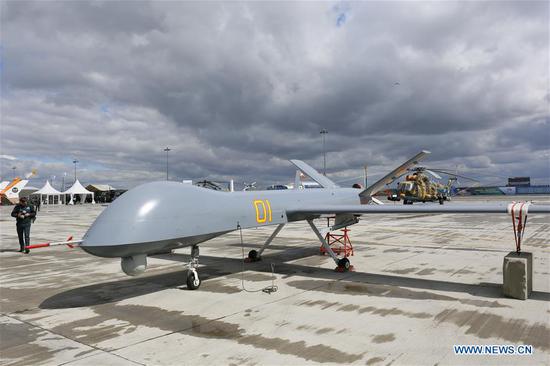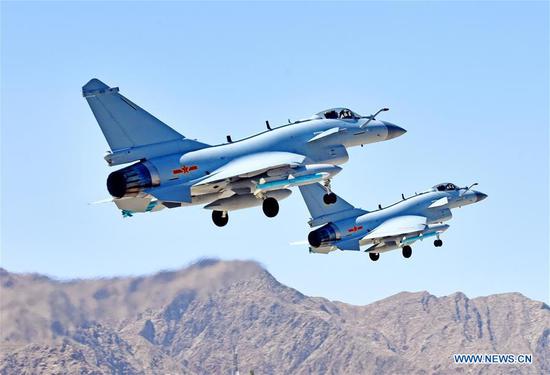China took a major step toward becoming a global aviation powerhouse as its homegrown large passenger plane, the C919, took to the sky on Friday.
The flight makes China the fourth jumbo jet producer after the United States, Western Europe and Russia. It also marks a milestone for the Commercial Aircraft Corporation of China (COMAC), the Shanghai-based manufacturer of the C919.
The twin-engine plane departed from Shanghai Pudong International Airport with five crew members on board but no passengers.
The plane took off at around 2 p.m. amid applause from more than 1,000 spectators on the tarmac, including Vice Premier Ma Kai and Shanghai Party chief Han Zheng. The flight lasted about 80 minutes.
The "C" in the aircraft's name stands for both China and COMAC, while 9 symbolizes "forever" in Chinese culture, and 19 represents the 190 seats at maximum capacity.
With a standard range of 4,075 kilometers, the narrow-body jet is comparable with updated Airbus 320 and Boeing's new generation 737 planes, signaling the country's entry into the global aviation market.
The successful flight moves China one step closer to transforming itself from a manufacturer of low-cost goods to a creator of advanced technology.
It marks a major breakthrough of China's large passenger plane project and a major landmark in the development of China's civil aviation industry, the Communist Party of China (CPC) Central Committee and the State Council said in a congratulatory letter.
It is a great achievement made under the leadership of the CPC Central Committee with Comrade Xi Jinping as the core, said the letter.
"The maiden flight is exciting," said Wu Guanghui, the C919's chief designer, hailing it as the start of a new era in China's advanced manufacturing.
China has taken pride in developing the homegrown jumbo jet, regarding it as a symbol of national strength. It began developing its own large passenger jets in the 1970s and the first one, the Y-10, had a successful test flight in 1980. But the project was later abandoned.
In 2007, the State Council approved plans to develop a large passenger jet. In November 2015, the first C919 jet rolled off the assembly line. More than 200,000 technicians worked on the project.
The jet was designed and produced in China and made with resources from around the world. It is an achievement in global cooperation, said Wu.
The C919 incorporated parts from over 30 global suppliers such as Honeywell International Inc. Its engines were made by a joint venture between General Electric and Safran Aircraft Engines.
The flight marks the culmination of a successful collaboration between Safran and China. "We are very confident that the C919 will play a more important role in the world aviation industry," said Olivier Dubroeucq, Safran executive vice president of the COMAC and AVIC Programs.
"China is willing to share growth opportunities with the rest of the world. For Honeywell, which has invested heavily in China's aviation industry, we are picking the winner," said Steven Lien, president of Honeywell Aerospace Asia Pacific.
Despite the successful test flight, it may still take time for the C919 to take off in the market.
Shaking the dominance of giants Boeing and Airbus in the near future is unrealistic, observers say, but the Chinese jetliner could be a strong option for global carriers in decades to come.
A total of 23 foreign and domestic customers, including China's national carrier Air China, have placed orders for 570 aircraft, according to COMAC.
But this is only the very first step. Even in China's domestic market, COMAC has a long way to go to turn technical success into business success.
Boeing predicted last year that China will become the world's top aviation market within 20 years, projecting a demand for more than 6,000 new aircraft in the next two decades with a total value of 1 trillion U.S. dollars.
China will need 5,110 new single-aisle airplanes through 2035, accounting for 75 percent of the total new deliveries, according to Boeing.
The C919 will be a strong competitor in this field as it is economical and comfortable, according to a research note from Guosen Securities.
COMAC will seek airworthiness certificates from the Civil Aviation Administration of China and foreign aviation safety regulators before making its first deliveries slated for around 2019.


















































